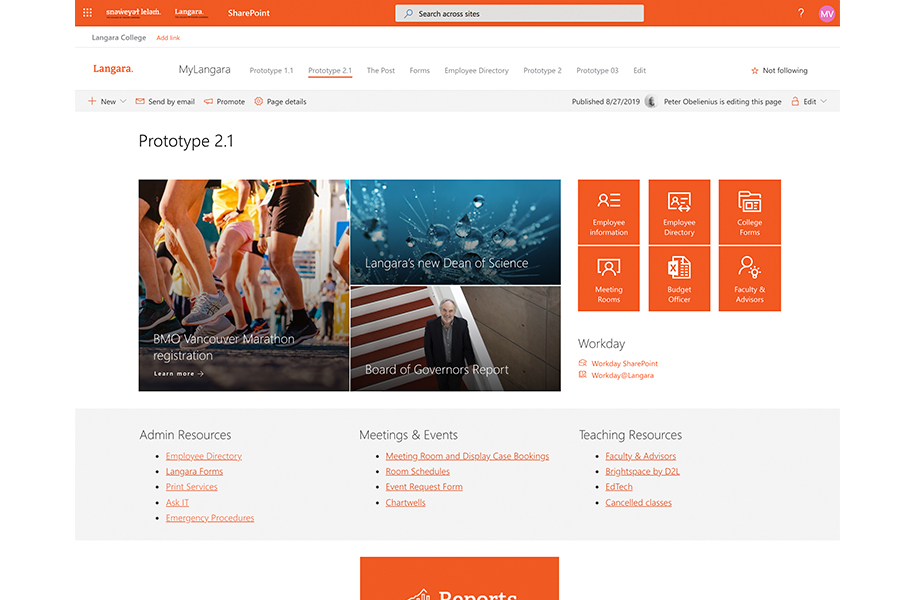The problem(s). The hypothesis.
Langara needed to increase cybersecurity for internal information and selected Sharepoint as the intranet platform. It integrated seamlessly with other Microsoft products such as Office 365.
Objective.
- Review and improve current Information Architecture
- Design a Sharepoint site answer to the needs of our community
- Anticipate employee questions and concerns and address them promptly.
- Keep the community informed with timely updates.
- Provide support through training, guides, and FAQs.
Role played.
Lead designer and main interviewer on a team of 2 developers, a Lead designer and main interviewer responsible for determining the overall design direction of the project, prototypes and final templates while collaborating with two developers, a communication officer, and the digital strategy and production manager.
Proposed solution process.
We analyzed traffic and behaviour flow (Web Analitycs, Heat Maps, Scroll Maps, and Confetti). To define the information architecture, we have advisory groups brainstorming. Additionally, we conducted qualitative-personal interviews with faculty and staff. We asked for their daily essential tools. We wanted to know what users thought and felt about the new site after using it for the first time.
In addition, we analyzed the current user follows and redundant and expired links.

Challenges faced.
Address all different clients’ needs, particularly faculty, as we wanted them to get inspired to use this portal more often.


Results.
The collaboration generated between IT and us was constructive and efficient. We hit all of our significant milestones on time and within budget. The User testing and the employee advisory committee were essential in the process as they provided valuable feedback and voiced their concerns allowing us to improve the design solutions. Some users also became advocates and helped us drive the change.
QA testing was detailed and helped with the final product. It was able to uncover some issues by testing different platforms and browsers. QA implemented automated testing, which made the process more efficient.
What we learned.
- Involve developers during the early stages of the project. They can help with functionality and advice to make the site more efficient.
- Ask for training from the software provider before starting the project and arrange for a consultant during the duration.
- Implement documentation on standard processes and content ownership (department training); design templates and workflow.
- Identified roles from the beginning ( permission levels and approval process) will avoid a lack of access and permission to the portal.
